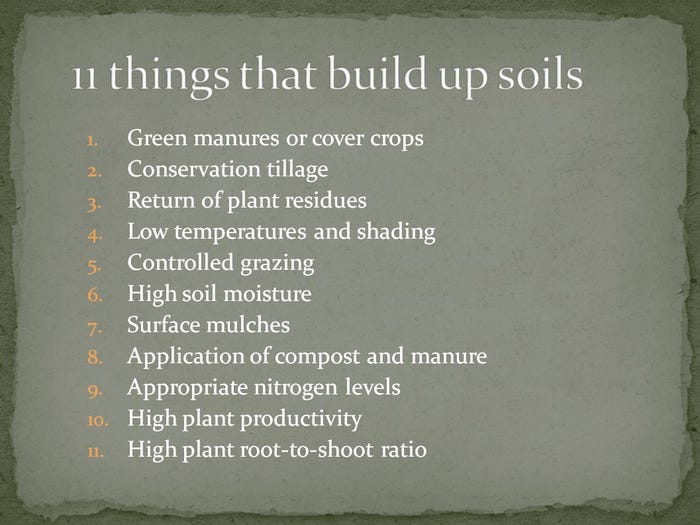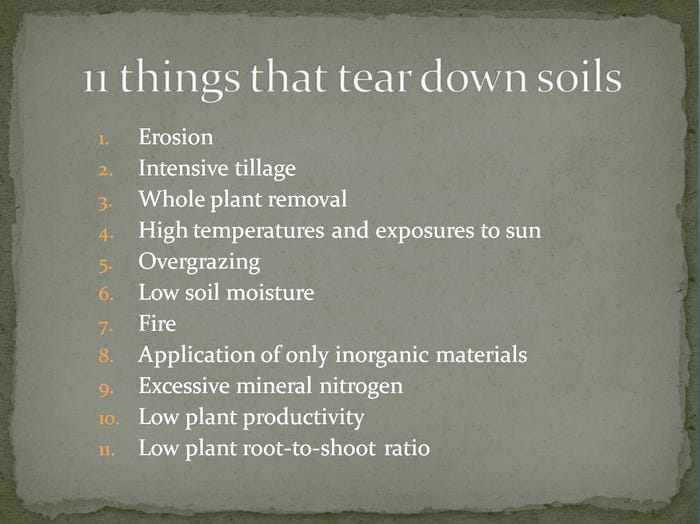Check your management practices against these lists and see whether you're gaining or losing ground.

The management practices which build soil up or tear it down are the same in crop ground as in pasture and there are actually lists for both.
Jay Fuhrer, NRCS soil health specialist in North Dakota, explains the things which improve soil are the things which protect and encourage soil life.
Soil microbiology is the root of soil life and it needs us to do four things:
Keep the soil cool.
Build up water infiltration and retention because soil life is subaquatic.
Help provide aerobic conditions through good soil structure.
Provide a flow of carbon-rich food through the roots of healthy, thriving plants.
In light of this thinking, Fuhrer has compared real-life, case studies with a chart from The Nature and Properties of Soils.
One of his examples is burning and haying a meadow. On the list of negatives, the fire dries the ground, frequently burning up litter and leaving the ground open to erosion, heat and rainfall runoff instead of infiltration. Then when the grass regrows, someone cuts it off as close to the ground as possible, bales it and carries it away. This again exposes the soil to the heat of the sun and removes most of the possible litter which helps protect the soil and feed soil organisms.
The long growth period of some hay fields can be a positive factor because it promotes deep root growth and a reasonably high root-to-shoot ratio. Yet other negatives put a drag on those positive factors.
If this were an introduced-grass pasture, it likely would get a dose of fertility from the local fertilizer dealer, and that is also listed in the negatives to soil life and soil building.

These things build soil
Conventional-tillage farming, of course, is about as bad as it gets because it subjects the soil to pretty much every ravage onConventional, set-stock grazing typically falls somewhere just between tillage farming and haying, if one considers all the factors on these two lists.
By contrast, what if a beef producer chooses to feed hay in the winter back onto the same ground from which it was harvested in the summer and to spread that feeding evenly across the pasture?
In another case study, Fuhrer says the return of the organic material, together with the biological activity and the fertility of urine and feces, began to increase soil life and therefore soil nutrients and overall soil health.
In four years, an 80-acre hay meadow improved from 155 bales in 2011 to producing 275 bales in 2014. That is a 71% increase in forage production.
Look at these lists and consider how you might improve soil health and productivity.

These 11 things damage soil
About the Author(s)
You May Also Like



